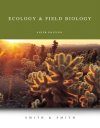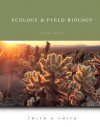Textbook
Out of Print
By: Robert L Smith and Thomas M Smith
838 pages, Col photos, col & b/w illus, figs, tabs, maps
![Ecology and Field Biology Ecology and Field Biology]()
Click to have a closer look
About this book
Contents
Biography
Related titles
About this book
Presents a comprehansive review of all aspects of ecology, including evolution, ecosystems theory, practical applications, plants, animals, biogeochemical cycles, and global change.
Contents
I. INTRODUCTION. 1. Ecology: Meaning and Scope. II. THE PHYSICAL ENVIRONMENT. 2. Solar Radiation and Climate. 3. The Physical Environment. 4. Soils. Ecological Application: How a Lack of Mushrooms Helped Power the Industrial Revolution. III. THE ORGANISM IN ITS ENVIRONMENT. 5. Adaptation. 6. Plant Adaptations to the Environment I: Photosynthesis and the Light Environment. 7. Plant Adaptations to the Environment II: Thermal, Moisture, and Nutrient Environments. 8. Animal Adaptations to the Environment. 9. Decomposition. Ecological Application: St. Patrick and the Absence of Snakes in Ireland. IV. INTRASPECIFIC POPULATION ECOLOGY. 10. Properties of Populations. 11. Population Growth. 12. Intraspecific Competition: Population Regulation. 13. Life History Patterns. V. POPULATION INTERACTIONS. 14. Interspecific Competition. 15. Concepts of Predation. 16. Predators and their Prey. 17. Coevolutionary Interactions: Parasitism and Mutualism. 18. Human Impacts on Populations. Ecological Application: The Complete Recipe for Apple Pie. VI. ECOLOGICAL GENETICS. 19. Population Genetics. VII. THE COMMUNITY. 20. Community Structure. 21. Community Dynamics. 22. Processes Controlling Community Dynamics. 23. Landscape Ecology. Ecological Application: Asteroids, Bulldozers, and Biodiversity. VIII. THE ECOSYSTEM. 24. Ecosystems Productivity. 25. Biogeochemistry I: Nutrient Cycling. 26. Biogeochemistry II: Global Cycles and Human Impacts. 27. Biogeography of Ecosystems. Ecological Application: Time to Rethink the Lawn. IX. COMPARATIVE ECOSYSTEM ECOLOGY. 28. Grassland to Tundra. 29. Forests. 30. Freshwater Ecosystems. 31. Saltwater Ecosystems. 32. Global Environmental Change. Ecological Application: Time is On Their Side. Appendix A: Sampling Plant and Animal Populations. Appendix B: Measuring Community and Population Structure. Appendix C: Distribution of World Vegetation Maps. Glossary. Bibliography. Acknowledgements. Index.
Customer Reviews
Biography
Robert L. Smith holds a B.S. in Animal Science, an M.S. in Wildlife Biology along with a Ph.D. in Wildlife Biology from Cornell University. Currently, he is a professor of Ecology at West Virginia University. He has spent over 30 years teaching Ecology and conducting field research throughout the world. His teaching responsibilities have involved mostly undergraduate courses in general ecology and graduate courses in population ecology and wildlife management. His research has included forest-fire related problems in southern West Virginia, vegetational development and succession on abandoned and reclaimed surface mines, the relation between forest vegetational structure and the forest bird community, and forest habitat assessment and habitat evaluation procedures based on vegetational structure. Smith has served as a consultant to congressional committees, workshops on environmental education and energy and environmental problems, the National Landmarks program of the U.S. Department of Interior, National Research Council Task Forces on wildlife and fisheries issues and ecological classification systems for implementing environmental quality evaluation procedures. He is the author of numerous articles and reviews as well as the author of three ecology texts: Ecology and Field Biology, Elements of Ecology and Ecology of Man: An Ecosystem Approach, Harper and Row, New York.
Textbook
Out of Print
By: Robert L Smith and Thomas M Smith
838 pages, Col photos, col & b/w illus, figs, tabs, maps




































